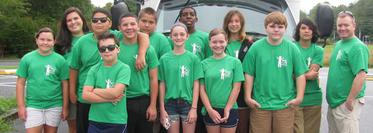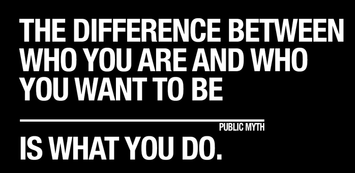EconomicDevelopmentCouncil.com
21st Century Economic Development
Education - Issues - Strategies - Solutions
ECONOMIC STRATEGIES
Building Economic Development
Through Youth Entrepreneurship Camps
Communities are successfully incorporating youth entrepreneurship into their economic development strategies. Community organizations and educators are partnering to offer youth entrepreneurship camps that build entrepreneurial skills in youth. This article shows examples of how communities are recognizing the importance of youth involvement in economic development.
Many youth between the ages of 9 and 18 attend youth entrepreneurship camps across America. A variety of camp activities include hearing from local entrepreneurs, taking part in hands-on activities to learn about their community, assessing their own skills, and creating a business idea. During the camp, youth complete activities that build creativity, teamwork, leadership, and financial literacy skills.
A remarkable trait of many camps is the partnering that takes place across the community to make the camps a reality. Several community partnerships include Community Colleges, Public Schools, local 4-H Cooperative Extension, and local Boys and Girls Clubs. Many camps are held on Community College campuses to help expose youth to the college environment.
From the very beginning, camp participants are encouraged to "think like an entrepreneur" by being creative and taking risks. The business teams are encouraged to think about what their community needs, what they do well, and what interests them. The teams quickly become competitive about who has the most creative and sometimes most outrageous business ideas. Unfailingly, the adults who serve as judges for the final presentations are impressed by the creativity of the ideas, the quality of the presentations, and the engagement of the students.
Many communities make the decision to select a theme for their entrepreneurship camp and encourage students to create a business around the theme. One theme camp was delivered by a partnership that included a Community College and a Museum. With funding from a Conservation Fund, the College and Museum created an entrepreneurship camp that taught students about the heritage and history of a nearby historic Island and the local community. Campers created businesses that reflected this heritage, including a tool that would help boats stuck on sand bars, and a nature center that would offer guided tours. One student commented, "My favorite part was learning what it took to make a business and manage a checkbook."
Many counties across America are offering youth entrepreneurship camps to teach youth leadership and problem solving skills. Communities are beginning to understand the importance of partnerships and collaboration. Community Colleges partner with 4-H Cooperative Extension to offer Youth Entrepreneurship Camps in various Counties across America. The camps combine entrepreneurship with growing industries in the region including advanced materials and sustainable energy. Students take part in presentations by different companies and learn about how that companies products are developed and tested. They handle and test different materials from many different companies that supply different products such as the blast proof panels that protect U.S. troops. Through the theme camps students are encouraged to think about developing businesses that capitalize on the assets in their community.
Several counties are working together to offer a regional youth entrepreneurship camp. Various Community Colleges offer the Young Entrepreneurial Scholars (YES!) Camp for high-school students and this year started a Middle School Academy Camp for Middle School students. The Young Entrepreneurial Scholars (YES!) Camp requires interested students to submit a camp application and recommendations. Students who participate enter the camp with their own business idea that they hope to turn into a real enterprise one day.
Many communities are making the decision to include youth entrepreneurship in their economic development strategy. Youth entrepreneurship camps build on the trend and teach young people how to think like entrepreneurs and create a community that encourages entrepreneurship. Students learn about entrepreneurship as a career option, and learn entrepreneurial skills that will benefit them whatever their career choice. Youth entrepreneurship plays a role in economic development as community leaders learn tangible ways to make it part of their larger strategy. Entire regions will benefit through the creation of more businesses and a better trained workforce.
How Economic Development Incentives
Work To Attract Businesses
Economic development incentives are tools used by governments and other organizations to attract and retain businesses by reducing their operating costs, boosting their capital, and mitigating risk. These incentives typically come in the form of tax breaks, grants, and workforce assistance, and are often negotiated on a case-by-case basis.
Tax incentives
Tax incentives directly reduce a company's financial burden, freeing up capital for other business purposes.
Tax credits: This is a dollar-for-dollar reduction in a company's tax liability. Examples include tax credits for research and development, creating jobs, or investing in renewable energy.
Property tax abatements: These programs reduce or eliminate a business's property tax liability for a specified period, typically from five to 10 years. They are often offered by local governments to attract development in a specific area.
Tax increment financing (TIF): A TIF program uses the future property tax revenue generated by a new development to fund the project itself. The upfront cost of infrastructure improvements is covered by bonds, which are then paid back using the "increment" of new tax revenue that the development creates.
Sales tax exemptions: These waive the sales tax on certain business purchases, such as manufacturing equipment or raw materials, which can lead to significant cost savings.
Grants and loans
These incentives provide direct funding or favorable financing terms to support business projects.
Cash grants: Direct grants can be given to businesses to help with initial capital expenses, such as buying equipment or constructing facilities. In competitive scenarios, companies negotiate with economic development organizations (EDOs) to develop a tailored incentive package.
Low-interest loans: Some EDCs and state governments offer loans at interest rates below the market rate, with flexible repayment terms, to help finance a project.
Infrastructure grants: These grants help cover the costs of public infrastructure projects, such as upgrading roads or utilities, that are needed to support a new business or expansion.
Workforce development incentives
These programs ensure businesses have a qualified workforce by subsidizing training and recruitment.
Job training grants: Governments can reimburse businesses for eligible training activities or fund training programs through local institutions. This helps companies close skill gaps and meet the needs of their target industry.
Specialized training: Some states offer customized, no-cost training programs for companies that are new or expanding.
Work Opportunity Tax Credit (WOTC): The federal government offers this credit to employers who hire individuals from certain target groups that face barriers to employment.
Accountability measures and effectiveness
To ensure incentives meet their intended goals of job creation and investment, they often include accountability measures and are scrutinized for effectiveness.
Clawback provisions: Most incentive agreements include clauses that require a company to repay some or all of the incentives if it fails to meet specified job creation or investment targets within a set period.
Negotiation: The most generous and lucrative incentives are often negotiated on a discretionary basis, requiring the company to prove that the incentive is necessary for the project to go forward in that location.
Effectiveness debate: While supporters argue that incentives are necessary to attract businesses and promote growth, critics question whether they actually influence business decisions or simply subsidize activities that would have happened anyway. Some studies have found that incentives can be effective when properly implemented.
Some Innovative Strategies For
Economic Development Besides Incentives
Beyond direct financial incentives, economic development councils and communities are using more innovative, sustainable strategies to foster long-term growth and attract businesses. These approaches often focus on building strong local ecosystems and improving the overall quality of a place.
1. Nurturing entrepreneurship ecosystems
Instead of only recruiting established companies, many areas are focusing on growing their own from the ground up.
Incubators and accelerators: These programs offer startups mentorship, networking, and seed funding to help them develop and scale their businesses.
Access to capital: Communities create microloan programs, community development venture capital funds, and crowdfunding platforms to provide entrepreneurs with the funding they need.
Specialized training: Workforce development programs partner with educational institutions to provide specialized training that meets the needs of emerging local industries.
2. Strategic infrastructure investment
Modern infrastructure goes beyond roads and bridges to support the economy of the future.
High-speed broadband: Reliable, high-speed internet access is critical for competing in the digital economy and attracting tech-savvy businesses.
Innovation districts: These urban areas concentrate research institutions, startups, and tech companies to foster collaboration and accelerate new ideas. They are designed to create a "live, work, learn, and play" environment that attracts top talent.
Revitalized commercial areas: Investments are used to beautify downtowns and commercial districts, which increases foot traffic, supports local businesses, and boosts property values.
3. Creative placemaking
This strategy uses arts and culture to improve the social, economic, and physical well-being of a community. Creative placemaking projects can transform vacant properties into vibrant community spaces, creating a more attractive environment for residents and visitors.
Cultural clusters: Developing concentrations of artistic and cultural venues can become major tourist draws and help define a community's unique identity.
Public art and events: Integrating art installations, performance spaces, and festivals into urban planning can energize public spaces and attract diverse crowds.
4. Asset-based economic development
This approach focuses on leveraging a community's existing strengths rather than trying to fix its weaknesses.
Local culture and history: Communities can use their unique cultural and historic resources to promote tourism and create a strong sense of place.
Natural amenities: Developing local assets like parks, rivers, or scenic trails can attract visitors and residents seeking a high quality of life.
Human capital: By investing in the existing talent within a community through education and leadership programs, towns can build capacity from within.
5. Community-owned enterprises and local currencies
These initiatives keep money circulating within the local economy.
Community land trusts: These organizations acquire and manage land to ensure the long-term affordability of housing and other community assets.
Worker cooperatives: These businesses are owned and run by their employees, keeping profits and job opportunities within the community.
Local currency systems: Some cities, like Bristol in the UK, have introduced local currency systems to encourage residents to spend their money at local, independent businesses.












